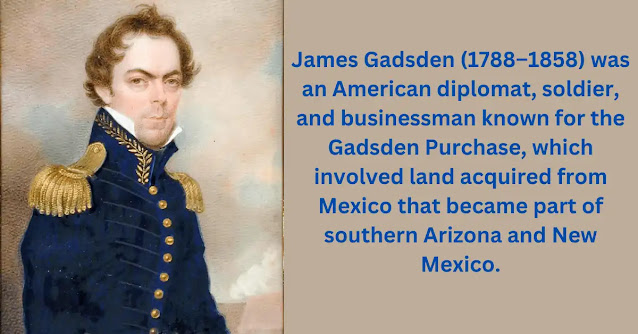New Amsterdam’s Journey to New York: A Historical Narrative
The transformation from New Amsterdam to New York marks a pivotal chapter in American history, as the Dutch-established trading post evolved into a thriving colonial hub under British rule. Established by the Dutch West India Company in 1626, New Amsterdam quickly became a prosperous settlement due to its strategic location for trade and commerce. The name “New Amsterdam” reflected the Dutch origins of the colony and was chosen to honor Amsterdam, the capital city of the Netherlands. The Dutch developed New Amsterdam to serve as a center for the lucrative fur trade in the region.
Under Dutch rule, New Amsterdam experienced a diverse population consisting of Dutch settlers, as well as individuals from other European countries, such as England, France, and Germany. The colony also had a significant population of enslaved Africans and a small number of Native Americans. In this article, we will explore the lasting colonial legacy of New York City, tracing its historical transformation from Dutch control to British conquest. Additionally, this article also touches upon the establishment of New Sweden in North America that lasted from 1638 to 1655.
 |
| Image Source: Google, Explorer Henry Hudson and crew landed at Verplanck Point in 1609 |
💻 Table of Contents:
- The Dutch Golden Age: Exploration and Expansion into the New World
- The Rise and Fall of New Sweden in North America
- Factors in the Dutch Colony’s Downfall
- The British Claim and Conquest: New Netherland Transformed into New York
- Shifting Alliances: Dutch, British, and French Rivalries
The Dutch Golden Age: Exploration and Expansion into the New World
The United Provinces of the Netherlands emerged as a federal republic in 1579, breaking away from Spanish rule and establishing the first fully independent Dutch state. By 1609, the nation had grown to about 3.5 million people, distinguished by its superior skill in shipbuilding and world trade through entities like the Dutch East India Company and the Dutch West India Company. Amidst ongoing conflict with Spain, the Dutch Republic entered its “Golden Age” from 1600 to 1690, marked by explosive growth and prosperity.
During the Age of Exploration (15th-17th centuries), European nations embarked on voyages to discover new lands and resources. By 1612, explorers Adrian Block, Cornelis May, and Hendrik Christiansen had been surveying the east coast of North America and delivered reports about its rivers and resources to the Dutch East India Company.
As other European powers staked claims to land in the Americas, the Dutch built forts along the North (Hudson), South (Delaware), and Fresh (Connecticut) Rivers to secure their presence and gather valuable resources.
The Dutch West India Company, led by William Usselinx, encouraged Dutch citizens to purchase available land from the indigenous people in what was known as New Netherland. Initially, the colony was established as a business venture to profit from the fur trade in North America. The Dutch established their first colony in North America in 1614, which encompassed territories that now comprise New York, New Jersey, Pennsylvania, Maryland, Connecticut, and Delaware.
By the 1650s, New Netherland had grown significantly and became an important trading port in the North Atlantic. At its peak, the colony boasted a population of around 9,000 inhabitants, highlighting the Dutch Republic’s successful expansion into the New World during its illustrious Golden Age.
The colony attracted immigrants from across Europe and became a hub of trade, while the English took control of the colony in 1664.
 |
| Image Source: Google, Anglo-Dutch War |
The Rise and Fall of New Sweden in North America:
In the 17th century, Sweden emerged as a European Great Power and sought to expand its influence to the New World. The New Sweden Company was formed in 1637, leading to the establishment of the first permanent European settlement in the Delaware Valley with the construction of Fort Christina in present-day Wilmington, Delaware. Under Governor Johan Printz, New Sweden flourished, extending settlement along the Delaware River and fostering peaceful relations with Dutch and indigenous neighbors.
However, dissatisfaction with Printz’s rule led to his replacement by Johan Rising, who attempted to remove Dutch influence but ultimately surrendered to Dutch forces led by Peter Stuyvesant in 1655. According to historian Hildor Arnold Barton, New Sweden was the last European colonial settlement established in North America. Despite the end of Swedish sovereignty, the Swedish and Finnish presence persisted until the English acquisition of the region in 1681.
While Swedish immigration to the United States experienced a significant surge in the 19th century, with many settlers bypassing the region of New Sweden and heading to western states, the legacy of Swedish colonization in North America continued to endure.
💻 You May Also Like:
- Dutch New World Legacy: New York City as the financial capital of the World
- The British-Dutch Battle in South Africa: A Clash of Empires
Factors in the Dutch Colony’s Downfall:
The escalation of tensions between the Dutch and indigenous peoples in North America, fueled by land disputes and violent conflicts like “Kieft’s War” and the “Peach Tree War,” contributed to the overall instability and eventual failure of the Dutch colony. These conflicts affected relations between the Dutch and neighboring English colonies, creating a volatile atmosphere in the region.
 |
| Image Source: Google, New Amsterdam |
As a result, the Anglo-Dutch wars of the 17th century were partially motivated by competition for colonial possessions and control of trade routes. The challenges faced by the Dutch colony, including struggles with leadership, conflicts with indigenous peoples, and competition with neighboring colonies, played a role in the broader geopolitical tensions that climaxed in armed conflict between England and the Netherlands and lastly downfall of Dutch Colony.
The British Claim and Conquest: New Netherland Transformed into New York
In the 17th century, the British asserted their claim to New Netherland based on John Cabot’s earlier discoveries. In 1664, Charles II of England officially annexed New Netherland, renaming it New York, and granted it to his brother James, Duke of York and Albany. A fleet led by Sir Richard Nicolls was sent to seize the colony, resulting in the surrender of Fort Amsterdam and Fort Orange. New Amsterdam and the entire colony were renamed New York, while Fort Amsterdam became Fort James and Fort Orange was renamed Fort Albany.
After losing New Netherland, the Dutch engaged in a second Anglo-Dutch war (4 March 1665 – 31 July 1667), which ended with the Treaty of Breda in 1667. In the treaty, the Dutch gave up their claim to New Amsterdam, now New York, in exchange for Suriname.
Shifting Alliances: Dutch, British, and French Rivalries
Amazingly on January 23, 1668, the Dutch formed an alliance with Britain and Sweden to counter French King Louis XIV’s attempts to seize Spanish-held areas in the Netherlands. However, in May 1670, Louis XIV secretly allied with Charles II through the Treaty of Dover, and in 1672, he made another separate treaty with Sweden.
The Franco-Dutch War, also known as the Third Anglo-Dutch War, occurred from March 27, 1672, to February 19, 1674. It was sparked by Louis XIV and Charles II joining forces and declaring war on the United Netherlands with the intention of establishing French control over the Spanish Netherlands. During that period, Dutch soldiers under Captain Anthony Colve retook New York from the British.
 |
| Image Source: Google, Treaty of Westminster |
They seized Fort James and extended control to Albany and New Jersey, renaming the area New Orange in honor of William of Orange. However, these gains were short-lived, as the lands were returned to the British by the Treaty of Westminster on 19th February, 1674. British Governor Major Edmund Andros took control of New York, leading to the province and city remaining under British control until the end of the Revolutionary War in 1783, when the British evacuated New York City.
Conclusion:
In conclusion, the clash of colonial powers in North America, epitomized by the rise and fall of New Amsterdam and New Sweden, left a profound legacy on the region’s history. These settlements, established amidst geopolitical rivalries and fueled by economic ambitions, shaped the trajectory of European colonization in the New World.
Despite their eventual subjugation, the Dutch and Swedish influences persisted, contributing to the diverse cultural tapestry of the United States. Moreover, the geopolitical tensions between European powers, exemplified by the Anglo-Dutch wars, underscored the strategic importance of North America and set the stage for future conflicts and alliances in the continent’s history.
Frequently Asked Questions
The Dutch established their first colony, New Netherland, in 1614, encompassing areas that now include New York, New Jersey, Pennsylvania, Maryland, Connecticut, and Delaware. It began as a fur trade venture under the Dutch West India Company.
New Sweden was located in the Delaware Valley, with its first permanent settlement, Fort Christina, established in present-day Wilmington, Delaware, in 1638 by the New Sweden Company.
The Dutch lost New Amsterdam due to challenges like poor leadership, conflicts with indigenous peoples, and competition with neighboring colonies. These issues, combined with the Anglo-Dutch Wars, led to its eventual capture by the British in 1664.
The Franco-Dutch War (1672–1674) was caused by an alliance between Louis XIV of France and Charles II of England, who sought to establish French control over the Spanish Netherlands and weaken Dutch influence. Where did the Dutch settle in America?
Where was New Sweden in America?
Why did the Dutch lose New Amsterdam?
What caused the Franco-Dutch War?








